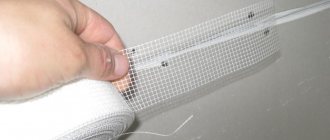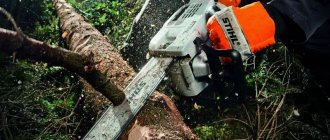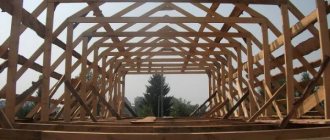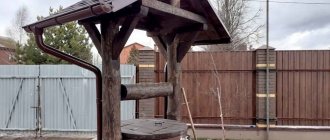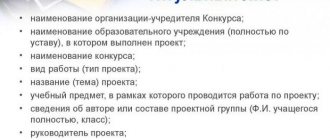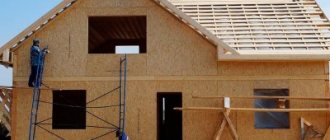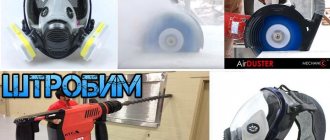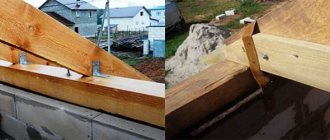One of the advantages of wall blocks made of lightweight cellular concrete is the ease of processing - cutting into elements of the desired size and shape. Having already built several houses from this material, I can say that it is not as easy as described. In any case, this procedure takes a lot of time and effort, especially if the project includes such non-standard elements as projections, niches, and bay windows. Now, when choosing what to cut aerated concrete blocks with, I focus on the volume and complexity of the work ahead.
Source infradom.ru
How and with what can you cut a gas block
Cutting materials during the construction of walls from piece elements is carried out in the vast majority of cases. Aerated blocks can be easily processed using ordinary tools, which makes the task of builders easier.
Aerated concrete has to be cut when constructing any buildings, be it a residential building or an auxiliary building. The design parameters of buildings almost never allow the dimensions of aerated blocks to be accurately met, so there is a need to manufacture additional elements. Blocks are cut in different directions and given simple and complex shapes. Various tools are used for cutting, although you can get by with a regular hacksaw. However, this option is only suitable for single blocks, but not for many additional elements required during construction work. To produce a large number of additional blocks, you need a more efficient tool. Let's take a closer look at this issue.
Types of equipment
When cutting aerated concrete blocks, various equipment is used:
- a specially designed tool for working with aerated concrete;
- hacksaw for metal;
- drill;
- cutters.
The equipment can be manual or mechanical. Aerated concrete material can be cut to any width and length, and given any angle of inclination. For small jobs, manual equipment is used, if the volume of materials is large, electric tools are used. It is not recommended to use a cutting unit - a chain saw.
You can divide aerated concrete blocks into the required parts using a cutting tool - a hand saw. It is used for small volumes of work and in cases where sawing with a hacksaw is difficult. If it is not possible to purchase a special cutting tool, make do with a hacksaw made by yourself. To make a wood saw suitable for aerated concrete blocks, teeth are made on it using a grinder and set with pliers . This cutting device is suitable for cutting several blocks and will last a short time. This is a great option to avoid spending money on purchasing cutting tools.
However, it is better to cut aerated concrete slabs with a special tool, then the cut edges will be smooth and even. Used as special cutting tools:
- incisors;
- wall chasers;
- planes.
Return to contents
Hand saw
For small amounts of work, use a hand saw. With its help, the openings of windows and doors are completed; it is also impossible to cope without it when laying the initial tiers of walls. In order for the device that cuts products to perform its function efficiently, auxiliary tools are used:
- A metal corner used to control the correct cutting angle.
- A ruler, marker or pencil that is needed to determine the location of the cut.
- Planer for aerated concrete products, which levels the surface layer of masonry.
Aerated concrete is one of the hard materials, which means the choice of cutting tools should be based on the quality of the cutting blade. It is incorrect to saw aerated concrete slabs with a hand saw, which is intended for wood material. This will take a lot of time and effort. The cutting element of a hand saw should consist of carbide components with larger teeth. The hand saw is available with one handle and two. The cost of a cutting tool is influenced by the distinctive properties of the tool and the manufacturer.
Reciprocating saw
A reciprocating hacksaw, which is similar to a jigsaw or electric drill, is an electric hand saw. It requires electrical power to operate. It easily cuts aerated concrete products. The blade acts as the cutting component. The sawing process looks like translational-rotational movements, moving in a straight line. Making the reverse movement, the blades rise. The design of the reciprocating cutting tool consists of three parts, two sides are movable, and one, the middle part, is inactive and serves as a lock at the cutting site. The advantage of a reciprocating saw is the accuracy and fineness of the cut. Reciprocating cutting is distinguished according to the following indicators:
- electric motor performance;
- cutting blade distance.
The reciprocating tool differs in the cutting method; it can be reciprocated or straight. This unit can be used directly at the work site. Using a reciprocating device for sawing aerated concrete structures, an accurate cut is ensured, so it is used when it is necessary to make grooves or adjust slabs to the desired size. To ensure accurate work on the aerated concrete block, markings are applied before sawing. Tool prices depend on the unit’s performance and power.
Tape
A belt mechanism is used for sawing aerated concrete for large production volumes. It is a closed steel strip with teeth along one edge. Cutting with a belt mechanism ensures an even cut and produces twenty times more workpieces than when working with a hand-held electric tool. The speed of work lies in the ability to cut aerated concrete structures 2-3 pieces at a time. The mechanism teeth are made of hard alloy and multi-layer coating. The cost of the cutting structure is not affordable for everyone, and reaches five thousand dollars.
Electric saw
A cut in aerated concrete blocks can be made with an electric saw. Cutting blades make precise and approximate cuts. An electric mechanism with sawing properties is often used in domestic construction. A power saw is an inexpensive tool, so it adds its presence to every second man’s inventory of building materials. The cutting tool has high technological characteristics and durable materials.
Wall chaser
A cutting device is a wall chaser designed for cutting grooves in a block and making grooves. You need to work as a wall chaser on a construction site. They are electric and manual. The advantages of the tool include:
- ease of use;
- efficiency;
- power;
- lightness and compactness;
- absence of mechanical dust.
The wall chaser consists of a double-sided cutter, which is fixed to the handle. To speed up work, use a tool with two holders. Before cutting, mark the locations of future holes with a pencil and ruler.
Plane
When sawing aerated concrete blocks, they try to give them a flat surface, but this does not always work. A plane that will level the surface of aerated concrete and make it perfectly smooth can cope with this task. The plane consists of a wooden base with embedded small teeth, which are located at an angle.
Manual
It is recommended to purchase two types of hand saw for aerated concrete:
- A hacksaw that will cut well must have a rigid blade structure. The only caveat of such a tool is that the blade is small and short, suitable only for interior panels with a thickness of no more than 20 centimeters.
- Standard hacksaws with a long blade. According to consumer reviews, all tools of this type have flexible blades. This feature results in an uneven cut. But if you follow special technology, you can get used to performing the work.
Advantages
- there are no difficulties in use;
- if the thickness of the canvas is sufficient, its deformation will not occur during operation;
- the result is a smooth surface of the cut, without the formation of chips;
- when the length is sufficient, it is suitable for both longitudinal and cross cuts;
- tools necessary when fitting window and door frames;
- acceptable cost.
Flaws
- before starting work, you should purchase a special metal square for cutting gas blocks, this will eliminate distortions;
- work that is carried out with hand tools requires a lot of time and certain skills.
To make high-quality masonry of aerated blocks, you need to choose the right tools. Many manufacturers produce complete sets of hacksaws designed for working with specific materials.
When choosing a hacksaw with a rigid blade, you don’t have to take the manufacturer’s company into account. The main thing is to choose a saw for aerated concrete that has a rigid blade.
Sawing by hand
A common but incorrect idea is that sawing aerated concrete by hand is a long and thankless task, with poor results (uneven cuts, torn edges, tedious and unproductive). But for an individual developer, it is possible and necessary to cut the blocks manually, since with a fairly thick canvas, the cut will always be smooth, and the porosity of the material does not put much strain on the hands. It's all about the cutting technique, the material and brand of foam block. If you are going to use a hand saw to cut a gas block or foam concrete brick of class B 2.0 and density (grade) D 400, then you will like the result. But the class B 3.5 block of the D 600 brand will make you think about purchasing an electric cutting tool.
A correctly chosen hand saw allows you to make several thousand cuts, and these can be complex lines in the form of a trapezoid or hemisphere. The conclusion suggests itself: in addition to the foam block brand, it is important to develop the correct process technique:
- Do not press too hard on the saw so that the blade does not move to the sides. Aerated concrete needs to be cut differently from boards or slats - the material is not cut, but crumbles, so pressure is not needed here in principle.
- Before sawing aerated concrete blocks, make sure they are well dried - wet crumbs will get stuck in the cut and complicate the cutting process.
- An even cut will be achieved if the block is first marked on three sides. Shallow cuts of 20–30 mm are made on the markings.
- The blade must follow the cuts so that there are no deviations along the planes. The saw should be held at an angle of 45° and not put pressure on the blade. To prevent the sawn piece from falling at the end of sawing and breaking off with uneven edges, the block must lie with its entire body on the stand.
- The hacksaw should be long so that the blade completely and with a margin covers the length of the brick.
- To make the work easier, you can make a tul from boards or plywood.
Reciprocating saw
An electric reciprocating saw is an excellent assistant for cutting aerated concrete, which saves effort and time. The cost of such a saw is reasonable, and for private construction its purchase is completely justified, especially since it can also cut wood.
The principle of operation of a reciprocating saw is in a replaceable blade, which very quickly makes rotational and translational movements. The length of the blade can be different, and for more convenient work we recommend blades longer than the thickness of the block.
Advantages of a reciprocating saw: good speed, cutting accuracy, minimal groove width, reasonable price.
Sawing tools
Hand saw
Layout of aerated concrete walls.
The design of a saw designed to cut aerated concrete is very similar to a regular hacksaw for cutting wood. The canvas is made from the same materials, but its thickness is much greater. This is done in order to avoid deformation when sawing hard materials. The use of a hand saw is widely used for working with gas silicate blocks in small volumes.
She performs sawing of additional blocks: this work usually occurs during the final laying of a wall or corner places.
The best models of hand saws for gas silicate blocks have a cutting blade made of carbide metal - for example, high-carbon steel. The saw, the teeth of which are made from an alloy of cermets, tungsten monocarbide powder and cobalt, is highly resistant to loads when sawing cellular concrete. Blades such as rapid ones have high wear resistance when working with gas silicate blocks. Hand saws for aerated concrete come in two types - a regular hacksaw and one with two handles. The latter is more convenient to use and significantly simplifies the work.
The main differences between hand saws for working with gas silicate blocks are:
- blade length;
- steel thickness – the quality of the cut directly depends on it;
- soldering on the teeth (on each tooth or every other one).
Manufacturing companies
Strength of block construction.
YTONG
Hand hacksaws from this company have significant advantages, such as ease of use during work, a high degree of tooth wear resistance, and a comfortable handle. All this helps to saw gas silicate blocks without much effort.
"Enkor"
The handle is made of two-component material. The blade, whose length is 670 mm, is made of stainless steel and has strong teeth, machined using special technologies. The quality of this company’s products is confirmed not only by various studies, but also by good reviews from customers who needed to saw aerated concrete and more.
One of the most popular manufacturers on the Russian market is the Zubr company. Each tooth on the hand saw is tipped with carbide, which makes cutting aerated concrete blocks easier. The long blade allows you to saw gas silicate blocks both lengthwise and crosswise.
Electric jigsaw
Craftsmen know this type of jigsaw as a reciprocating saw. This saw is used in the construction of medium and large objects.
You can change the blades on a jigsaw (put discs with different tooth sizes, change dull or damaged discs; the shape of the teeth on the discs can also be different - large and small teeth).
As a rule, for the convenience of builders, many saw models are available with replaceable batteries so as not to be tied to a power source.
When working with this type of tool, you must remember that sawing wet material is not permissible, as this may result in injury. The saw will “chew” the crumbs and may injure the builder.
Before starting work, it is better to try on the tool. Play through the saw movements without the power on.
You need to cut with the middle part of the saw; the length of the working cutting surface should be approximately 25 centimeters.
To avoid injury, you should hold the saw firmly in your hands.
Band saw
This is a multi-cut tool, which is a circular strip of steel with teeth on one side. This tape is used in a special band saw machine. This machine allows you to cut aerated concrete much faster compared to a hand saw, but its cost is high. The blade is made of hard alloy metal, the height of the working surface of the machine is adjustable. The cutting blade is tensioned automatically, which increases the cutting accuracy.
The cutting blade is guided by ultra-precise rollers. You can work for a long time without stopping, since waste is quickly removed through the gap in the machine. The cutting blade can be easily and quickly replaced if necessary. The machine is easily transported using wheels. And for greater stability of the machine during operation, stops are used.
Features of the material
Aerated concrete is a lightweight building material that can be cut with your own hands.
Aerated concrete is made from a mixture of Portland cement and sand, into which reagents are poured to form foam. Most often, ordinary powdered aluminum, aluminum pastes and powders are used for this. As a result of their reaction with Portland cement, small air bubbles are evenly distributed throughout the structure of the solution.
Depending on the density, aerated concrete blocks are divided into brands:
- D300-D500 – heat-insulating building material.
- D500-D900 – structural and thermal insulation material.
- D1000–D1200 – structural blocks.
The compressive strength of aerated concrete is 1.5 - 3.5 kgf/cm². In a dry state, the thermal conductivity of aerated concrete is 0.12 W/m°C. The density of this material is 400 - 1200 kg/m³.
Enclosing and load-bearing structures built from aerated concrete belong to fire safety classes I and II.
This material is environmentally friendly, since no toxic substances are released from it during operation.
Due to its good performance characteristics, aerated concrete is widely used in low-rise construction.
Other tools
To lay blocks on glue, use a hacksaw for aerated concrete, a special trowel-bucket, a grater, and a wall chaser. You will also need the following auxiliary devices:
- To make the work easier, you will need to press the saw against the aerated concrete surface, so you will need to purchase a limiter for the blade stroke. This method will increase quality, accuracy and speed. In this case, it is possible to shift the stop, which will provide the desired step width when cutting blocks.
- The pendulum system will increase the speed of work and remove waste from the working surface, thus extending the service life of the blade and reducing the load on the hand. Not every model has this feature.
- A drill cutter for aerated concrete is suitable for making grooves for reinforcement.
Briefly about the main thing
As you can see, there is plenty to choose from when cutting foam blocks. The most affordable option is a hand saw for cellular concrete, but it must be of good quality. A reciprocating saw with special blades will save a lot of time. And for large volumes and complex work there is nothing better than an Alligator saw. To make your choice, consider whether it is worth spending money on an expensive power tool and whether it will be useful to you in the future.
Question
Write in the comments if you don’t have the right tool, would you prefer to save money and buy a handsaw or would you sacrifice a decent amount for the quality and speed of work?
Description and selection criteria
Electric saws for aerated concrete are characterized by colossal power and performance, which is necessary for processing huge blocks. When choosing a device, you need to take into account a lot of features, including the conditions in which the work will be carried out.
If cutting takes place on a construction site, it is better to buy a saw with a battery, as it is lightweight and mobile. In addition, it can be used to cut blocks in difficult conditions. The only negative is that from time to time you will have to recharge the battery, so the uninterrupted operation time is limited by the capacity of the battery.
In most cases, craftsmen buy reciprocating saws for gas silicate blocks, which are equipped with tips made from hardened cutters and pobedit. Electric saws with metal-ceramic cutting elements also have an excellent working life. They are able to withstand heavy loads and cut huge structures. The cutters of such tools are made of hard alloys of tungsten, cobalt and monocarbide.
Conventional hacksaws are used in such cases
- when the shape of the elements is finalized in the required sizes;
- if it is necessary to make additional blocks during the fitting of parts during the construction of walls and the design of an armored belt.
What is the difference between a professional saw for aerated concrete and carpentry tools? The differences from conventional hacksaws are:
- The hacksaw blade has an increased blade length; this distinctive feature allows for transverse and longitudinal cuts of gas blocks.
- The thickness of the steel element allows the blocks to be cut with high quality, which eliminates distortions and unevenness.
- Saws for aerated concrete have additional soldering on the teeth, which are located across the tooth.
- The teeth of the cutting edges are large in size, which ensures long-term operation of the tool.
How much aerated concrete material will be processed by one tool? Expensive models are produced with rapid blades or teeth, the nozzles are made of pobedit - a metal-ceramic composite, which includes particles of carbon, monocarbide and tungsten. Such components reduce the load on the blade, which increases the service life of the device. One hacksaw will be enough to process 20-30 m3 of aerated concrete products.
A hacksaw for aerated concrete with pobedit tips is usually used for small volumes of block elements. To speed up the work process and save effort, it is recommended to use an electric reciprocating saw for aerated concrete, which has a special blade.
Video: How to saw gas silicate blocks
Band-saw
Band saws for aerated concrete. Band-saw. It is a universal cutting tool used in band saws. This is a solid round steel strip with teeth located on one side of the strip.
Band saws quickly and efficiently cut gas silicate blocks. This machine is highly productive, allowing you to cut aerated concrete approximately 20 times faster than with a hand saw. The guide blade is made using special technologies from an alloy of hard metals; the height of the working surface can be adjusted. The cost of such a car is about 5000-6000 euros. Let's take a closer look at the Lissmac band saw, designed for cutting gas silicate blocks. When using this machine, aerated concrete blocks can be sawed not only straight, but also diagonally.
The main advantages of this machine are:
Strobe cutter for aerated concrete
When laying grooves for reinforcing bars, pipelines, electrical wiring, Internet cables, television and other communications in aerated concrete, wall cutters are used. They are divided into manual and electric.
There are two types of manual grinders that process aerated concrete. The first has a curved handle with holders for two hands. The double-sided knife is secured with bolts.
This tool for cutting aerated concrete is very convenient. Two holders provide uniform pressure, which significantly speeds up the work process. Another type of shredder also has two holders, but is straight. Using this tool, it is easy to make grooves and spacers in gas silicate blocks. Its use allows you to perform work with high precision.
An electric wall chaser for processing aerated concrete is made in the form of a small device with two rubber rollers, which greatly facilitates the movement of a surface cutting tool made of aerated silicate blocks. The rotating body has several cutters driven by an electric motor of the tool. Hand holders are located above the rollers. Electric cutters are produced by many companies, the most popular of which are: Makita, Sparky, Prorab, Bosch, Elmos.
The hand tool is considered a universal tool for sawing gas silicate blocks. Can be used under any conditions, including when there is no power supply. Using electric saws is much more functional, but at the same time expensive and unusable without a power source.
Alligator
The alligator-type saw is particularly durable and wear-resistant. The teeth of such a saw have special coatings made of pobedite, which makes the teeth more durable. This tool is used in the construction of large objects (apartment buildings, large offices).
The advantage of this tool is that it does not need to be constantly sharpened or blades changed, as, for example, in an electric jigsaw.
When purchasing such a saw, it is better to choose an option with a thick-walled blade, since only cutting with such a blade will give an even cut without chips or roughness.
It is often written that before starting to work with such a saw, you need to lubricate the surface with a special lubricant, but practice says otherwise. The lubricant mixes with dust, causing the saw to stop working.
Although the instructions for most tools of this type specify the use of lubricant. The absence of lubricant increases productivity significantly.
Cutting Notches
To install jumpers or fill an armored belt, you need special U-blocks with a recess-trough into which reinforcement is installed and concrete is poured. It is better to buy them ready-made. But it happens that it was not available or there was not enough, and you have to think about how to cut the gas block to obtain such a complex shape.
All of the tools listed can be used, but with their help it is difficult to achieve the same depth of the slots and an even line of their “bottom”. In such cases, I recommend a circular or circular saw, the blade of which can be set to the desired height. If you have a wall chaser, even better.
How to make a block with a recess yourself, watch the video:
CUTTING FOAM CONCRETE - cutting technology for manufacturing foam blocks
Foam concrete cutting technology
The cutting technology for producing foam blocks involves pouring the foam concrete mixture into molds without cells with easily removable formwork. Within 6-9 hours, the foam concrete gains the necessary strength to remove the formwork. After this, the foam concrete mass on the pallet is transferred by a traverse to the cutting complex for cutting the foam concrete.
The design of the complex for cutting foam concrete ensures the production of foam blocks with an accuracy of + 1 mm. Equipped with a screw for removing the top and twisted strings for cutting foam concrete mass. The cutting cycle for foam concrete is 5-7 minutes. The strings for cutting foam concrete can be installed to the required sizes of foam blocks.
Thanks to the technology of cutting foam concrete, it is possible to produce foam blocks with high accuracy of geometric dimensions, straightness of edges, and excellent surface quality. This, in turn, makes it possible to lay foam blocks using glue, which significantly increases the thermal efficiency of external walls made of foam blocks.
Details about cutting equipment for the production of foam blocks are indicated on the equipment for the production of foam blocks
The form for cutting foam concrete has:

